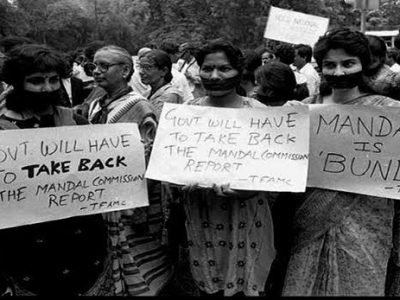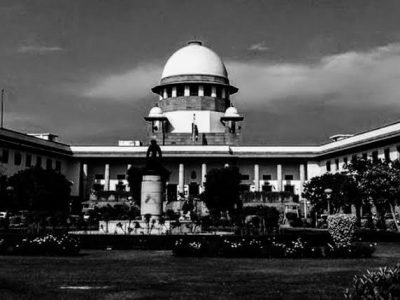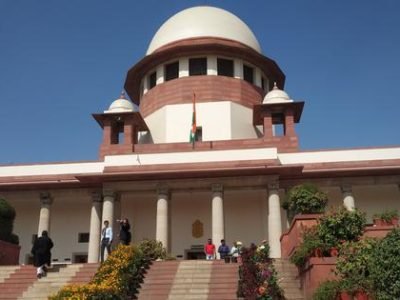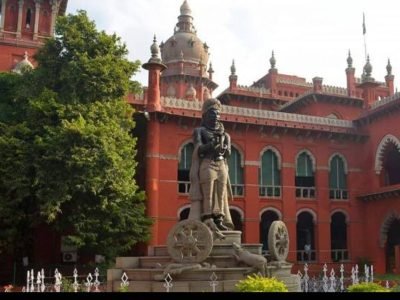
Author: S. Aditya, 2nd Semester LL.M. (Corporate Law) at Hidayatullah National Law University, Raipur.
Introduction
Absorption of contract labourers carrying on perennial work into the company in accordance with the notification published by the Central government abolishing contract labour. Analysis of social responsibility of the Government and judiciary, responsibility to apply the three pillar test for the Welfare of the workers i.e. fundamental rights, directive principle of State Policy and preamble. Implication of the term “appropriate government” analysed in the light of interpretation of the term “state and other authorities” under Article 12 of the Constitution of India.
Essential details of the Case
Case Citation: AIR 1997 SC 645
Appellant(s): Air India Statutory Corporation
Respondent(s): United Labour Union & Ors
Concerned Statues and Provisions: Contract Labour (Regulation and Abolition) Act, 1970; Article 226 of the Indian Constitution.
Bench: K. Ramaswamy, B. L. Hansaria, S. B. Majmudar
Date of Judgment: November 6, 1996
Present Status: Overruled by Steel Authority of India Ltd v. National Union Waterfront Works, MANU/SC/0515/2001
Facts of the Case
A Notification dated 9th December, 1976 was issued by the Central Government for abolition of contract labour who were carrying out the perennial activity of sweeping, cleaning, dusting and watching of the building under the authority of Contract Labour (Regulation and Abolition) Act, 1970. The instant Respondents (Labour Union) had filed writ petition before the Bombay High Court seeking a direction of absorption into the instant Appellant company carrying out public function, stating that as soon as the Contract Labour was abolished the union of labours automatically got employed under the organisation and must have been regularised into the organisation by absorption. This prayer was granted by the Single judge of the Bombay High Court and later the appeal before the Divisional bench of Bombay High Court was not allowed. The Appellant thus filed a Special Leave Petition (SLP) before the Supreme Court to adjudicate the automatic absorption rule. The Appellant contended, that after the notification of 1976, a new Advisory Council had formed in the year 1986 and had advised the Central Government not to abolish the contract labour engaged by the Appellant organisation and also contending that Government had issued new notification declaring non-abolishment thus the earlier issued notification must be held to be nullified.
Issues of the Case
The following issues were framed:
- What is the meaning of the word “appropriate government” under Section 2(1) (a) of the Act, Whether the Central government was authorised to issue Notification in the first place?
- Whether on abolition of the contract labour the Union Labours are entitled to be automatically absorbed into the Appellant Company?
- Whether the High Court under Article 226 has power to direct their absorption ?
- Whether it is necessary to make a reference under Section 10 of the ID Act for adjudication of dispute qua absorption of the contract labour?
- Whether the view taken by this Court in Dena Nath is correct in law ?
Arguments from Appellants
- It was contended by the appellants that the industry was incorporated into a Company and was carrying on commercial activities and therefore could not be covered under “industry” as per the Contract Labour (Regulation and Abolition) Act, 1970.
- It was also contented further that the Central Government could not have issued such abolition given the fact that only in 1986 the amendment to the parent Act endowed the power upon central government prospectively to issue such notifications.
- Appellant contended that the Central Government had issued new notification declaring non-abolishment of contract labour in the year 1986 had a nullifying effect upon the previous notification of 1976.
- The Appellant contended that only the Supreme court under Article 32 had an authority to entertain the petition for direct absorption of contract labourers and not the High Court under Article 226.
Arguments from Respondents
- The Respondent Union contended that Appellant should be considered an industry carried on or under authorities of the Central Government, since the company has been derived from the statutory body International Airports Authority of India Act, 1971.
- The Respondent Union contended that the “appropriate government” under section 2(1)(a) should be the Central Government.
- The Respondent Union contended that the notification of 1976 was issued after following the due process provided by the statute and therefore could not be cancelled by a subsequent notification.
- The Respondent Union contended that the authority of Supreme court under Article 32 is pari materia with the Article 226 where the High Court has much wider jurisdiction so as to provide suitable directions for direct absorption of contract labourers.
Judgment Held
In analysing the meaning of the word “appropriate government” under Section 2(1) (a) of the Contract Labour (Regulation and Abolition) Act, 1970 the Supreme Court taking into consideration the amendment made to the above said Act in the year 1986 interpreted that if any industry is carrying out its activities by or under the authority of Central Government, then the “appropriate government” would be the Central Government. Hence the Supreme Court went forward and elaborated that interpretation of labour welfare legislations must be made under public law principle and not common law principle. The principles evolved for interpreting the term “state agency” under Article 12 of the Constitution of India was evolved through a catena of judgements leading to the Ajay Hasia judgement where six essential criterions were carved out to interpret an institution into the term “other authorities of the state”. The Appellant was a erstwhile statutory corporation now incorporated into a Company, carrying on commercial activities, yet in the instant case the Supreme Court held that the Appellant would be considered an industry carried on or under authorities of the Central Government. The Supreme Court reading in the socialist morals of the constitution propounded that deep and pervasive control of the Central Government is not the sole criteria to declare an enterprise as Government run. The Appellant Company’s activities would thus be subjected to the tests of the Part III and Part IV of the Constitution of India to balance the interest of the public at large. Therefore the Supreme Court taking into consideration the judgements pertaining to the interpretation of the term “other authorities” as enshrined under Article 12, held that the current personality of the Appellant being a company has been derived from the statutory body International Airports Authority of India Act, 1971 and also it was noted that the Central Government had a substantial control over the said Appellant enterprise. Therefore it was held that the “appropriate government” under the section 2(1)(a) would be the Central Government and the Appellant Company must thus adhere to the constitutional morals of welfare of the labour.
It was further propounded by the Supreme Court that the Contract Labour (Regulation and Abolition) Act, 1970 was enacted with an object to bring social welfare for the labour class of the society and the provisions of the enactment must be interpreted in the light of public law principles. Also taking into consideration the Articles 14, 15, 21, 38, 39, 43a, 39a, 46 and 51a of the Constitution of India endowing upon the citizens the right to equality, and also a duty upon the state to provide equal treatment towards employment. The Directive Principles of State Policy enshrined in the Constitution of India, by the founding fathers, when read with the fundamental rights of the citizens imposes special duty upon the government to function in the favour of the public at large.
In the process of abolition of contract labour as provided under the Contract Labour (Regulation and Abolition) Act, 1970, section 10 and section 2(1)(a) of the Act was followed by the Government of India. Therefore the Central advisory board was formed to address the problems of contract labour persisting in the Appellant organisation and based upon the recommendation of the above said advisory board the Central Government being appropriate government issued a notification abolishing the contract labour. It was thus propounded that taking into consideration the legislative framework the abolition of the Contract Labour disconnected the intermediary role of the contractor, who was supplying the the labours for the perennial services required by the organisation, therefore now the principal employer became directly responsible for the welfare of the contract labour associated with the organisation. The Supreme Court declared the validity of the notification issued by the Central Government in the year 1976 whereby it validated Central Government’s jurisdiction to issue such notification and also declared that the process followed by Central Government while issuing the notification abolishing the Contract labour was valid. The Supreme Court came to the conclusion that the contention of the Appellant that the Central Government had issued new notification declaring non-abolishment of contract labour had a nullifying effect upon the previous notification of 1976 held no water. The Supreme Court further took into consideration the welfare objective of the 1976 notification, Supreme Court concluded that subsequent advisory recommendation for non-abolishment of the contract labour was against the spirit of the socialist democratic ingrained in the Indian Constitution. The Supreme Court declared that under the law the Central Government was denied its power to accept subsequent recommendations of another committee for non-abolishment of the Contract Labour system in Appellant’s establishment.
It was also contended that the relationship between the contract labourers and the instant Appellant organisation was formed through a contractual understanding between the organisation and the contractor supplying the aforesaid laborers. It was stated that as per application of the private law or the common law interpretation, the scope of employment must be limited to the language of the contract and must not be interpreted in a broader sense. It was further contended that the High Court had no authority to order the organisation to absorb the contract labourers given the fact that the relationship between the Appellant organisation and the respondent labour Union was formed by the help of a contract. The Supreme Court shunning these contention propounded that principal legislation empowering the Central Government to abolish the contract labour was a social welfare legislation, its was further stated, that the aim of the notification was to provide socio economic empowerment to the workers and therefore taking into consideration the innate socialistic nature of the Constitution of India the interpretation of the notification requires a broader construction in the light of public law principles and must not be narrowly interpreted in the light of the private law or the common law application which would leave the weaker section unable to protest against the whims of the the principal employer.
The Supreme Court while analysing the contention that High Court was not authorised to pass the order against the organisation directing absorption of the contraction labour, took into consideration the case of RK Panda vs Steel Authority of India, where contractual labourers working in Rourkela plant of Steel Authority of India, were regularised by the order of the Supreme Court of India while interpreting similar notifications passed by the Central Government on abolition of the contract labour under the authority of section 10 of the Contract Labour (Regulation and Abolition) Act, 1970. The Supreme Court, in the instant case went on to suggest that the authority of Supreme court under article 32 is pari materia with the Article 226 where the High Court has much wider jurisdiction so as to provide suitable directions taking into consideration the factual background. It was therefore propounded that the decision given by the Bombay High Court was valid under law.
The Supreme Court decided that all the contractual labourers must be absorbed into the organisation by creation of the appropriate “level D” employment by the Appellant organisation and further propounded that any dispute regarding the duration and term of the contractual labour must be determined by the industrial dispute law.
Critical Analysis
The Supreme Court of India while analysing this situation and considering the plea of the contract labourers came to conclusion, that it is the socialist responsibility of the Courts to allow the remedy of absorption of the contract labours in to the organisation when a writ petition under article 226 is filed before any of the high court or the same is filed before the Supreme Court under article 32.
The Supreme Court by this case overruled the earlier decided Dena Nath judgement which was the earlier precedent holding the ground, in relation to the matter of automatic absorption of contract labourers in the event of notification abolishing the contract labour issued by the appropriate government. The earlier judgement of the Supreme Court which was overruled by this judgement had declared that no provision having express automatic absorption of the contract labours could be found in the legislative language of the enactment in question. This judgement by constructive interpretation thus differentiated the previously decided catena of the Supreme Court judgements favouring the non-binding duty of the principal employer to absorb the contractual labourers in pursuance to the abolition notification issued by the appropriate government.
It is thus pertinent to note that this diversion existing on the legal issue of automatic absorption was referred to a constitutional bench by a divisional bench of the Supreme Court. The constitutional bench of the Supreme Court of India in the matter of SAIL v National Union Water Front Workers and others, overruled this judgement which mandates automatic absorption of the contract labourers and restored the Dina Nath (supra) judgment upon the issue of automatic absorption.






